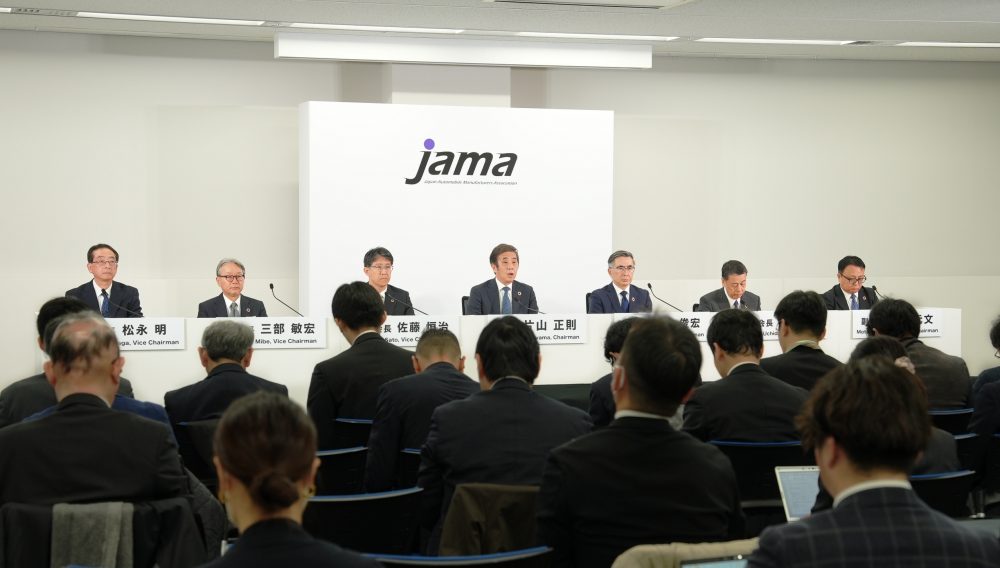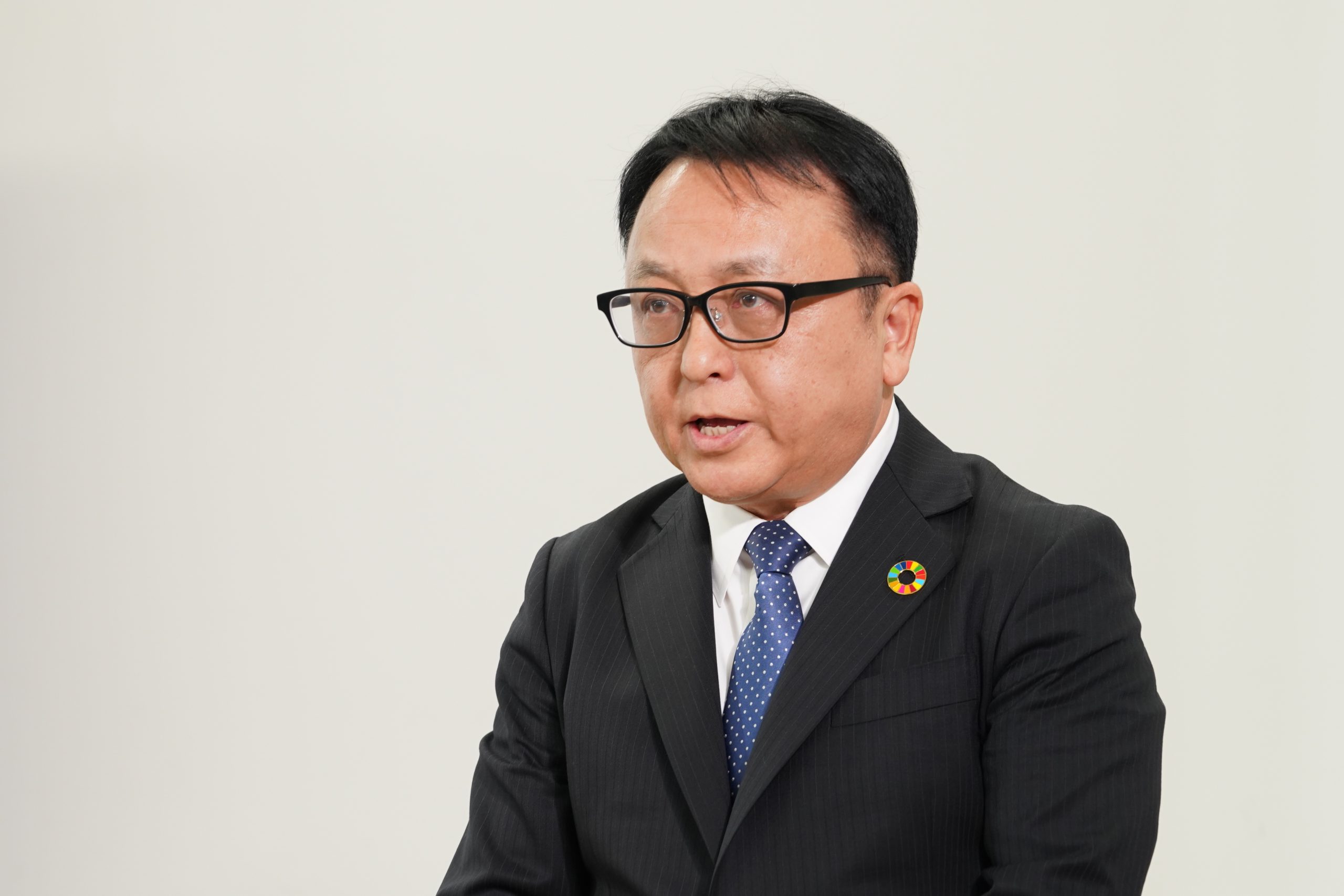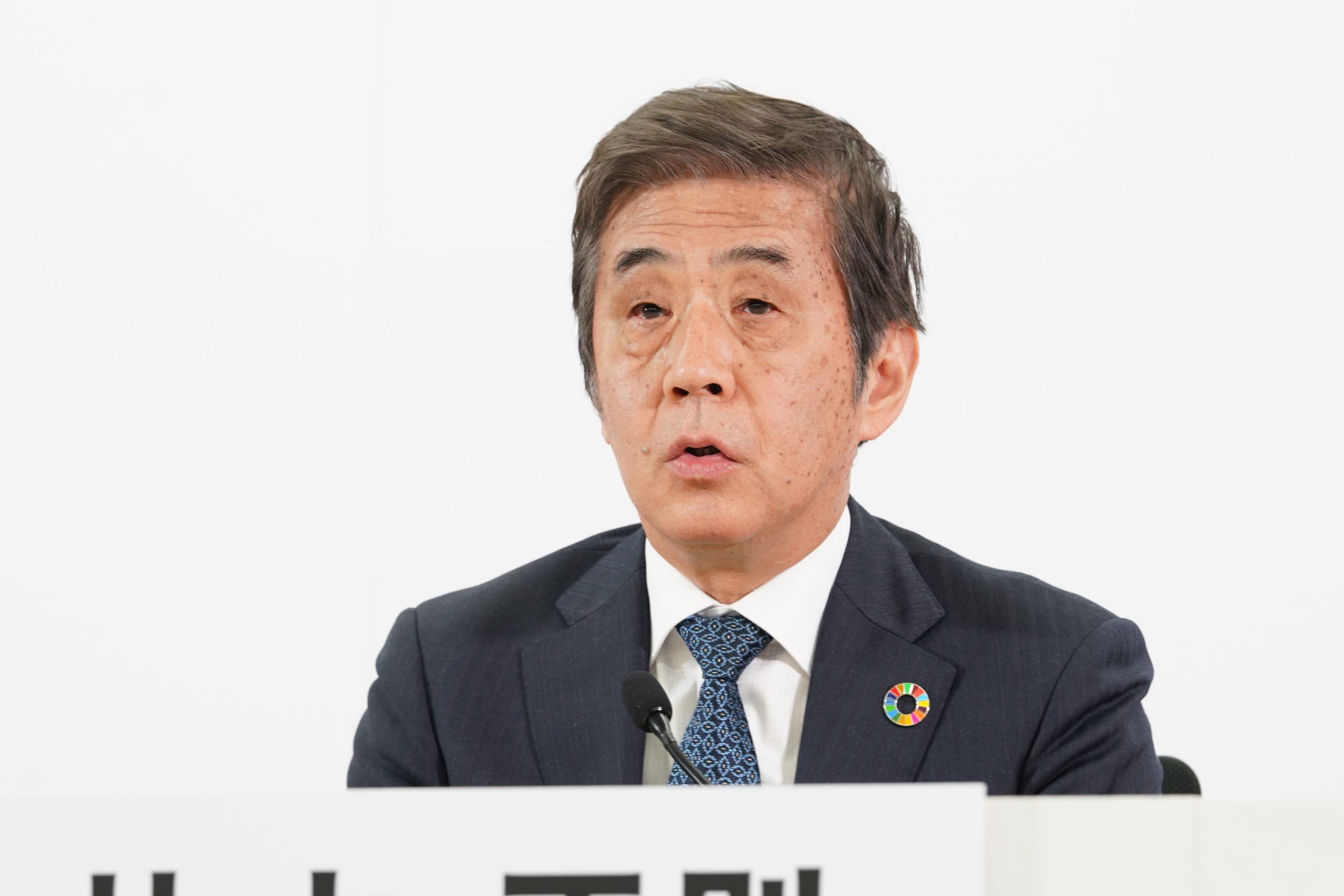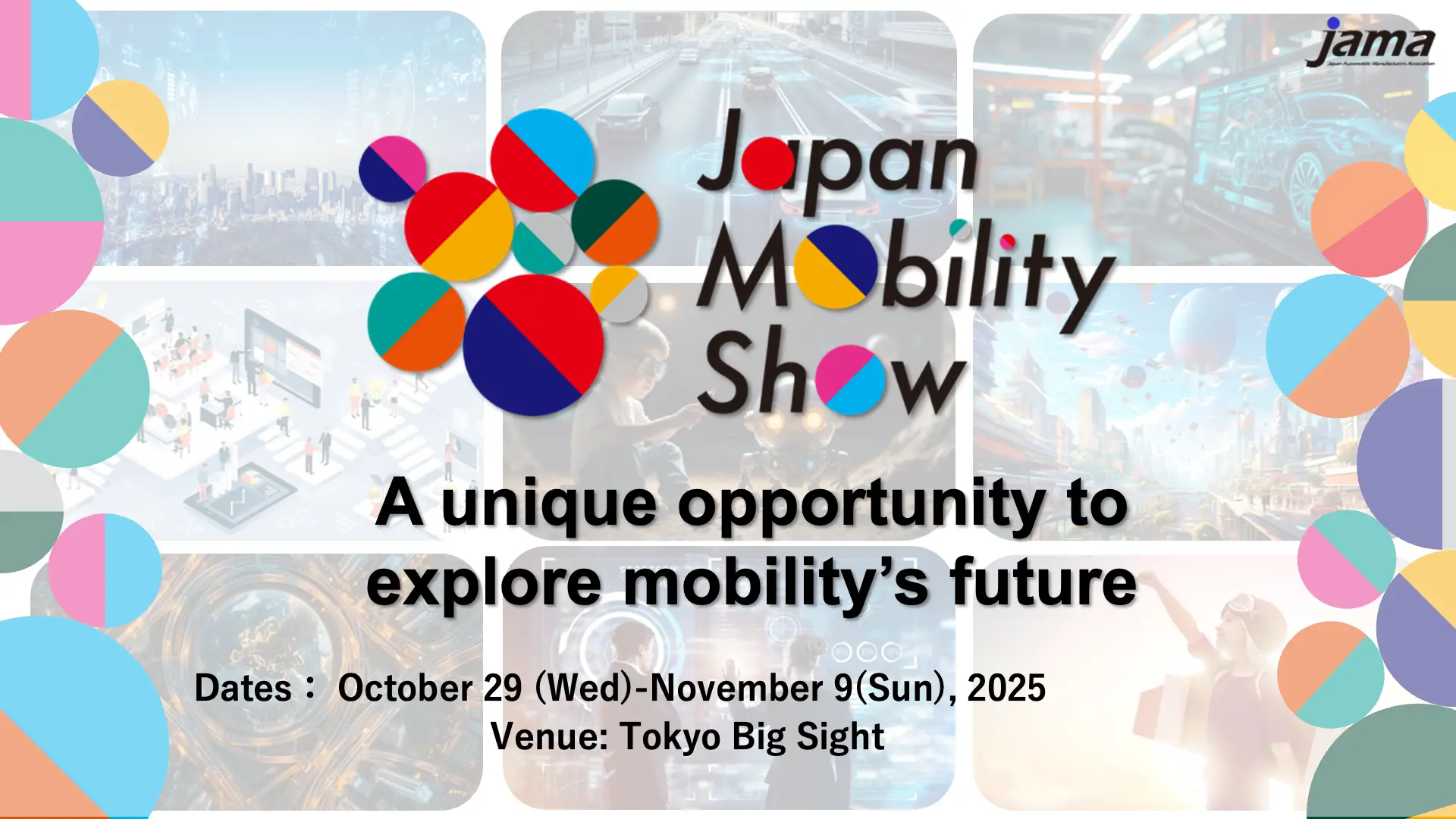Press Conference
- HOME
- News
- Press Conference
- JAMA Press Conference March 2025
JAMA Press Conference March 2025

The Japan Automobile Manufacturers Association (JAMA) held a press conference on March 19, 2025.
Chairman Masanori Katayama (Isuzu) reported on the wide-ranging topics discussed at that day’s board meeting, including the challenges facing the automobile industry on various fronts and plans for this year’s Japan Mobility Show.
Full Archive of Press Conference
The press conference opened with greetings from Motofumi Shitara (Yamaha), who was appointed Vice Chairman of JAMA at the March 19 board meeting.
SHITARA Motofumi, Vice Chairman
(President, CEO and Representative Director, Yamaha Motor Co., Ltd.)

I have been appointed today as Vice Chairman. Through the activities of JAMA, I am committed to contributing to the development of the industry. I will be working on two of the seven challenges our industry faces as identified by JAMA—namely, green energy and cross-industry data collaboration—and am also in charge of the Motorcycle Committee. I look forward to your continued support.”
Next, Chairman Katayama spoke at length about the activities of JAMA.
KATAYAMA Masanori, Chairman
(Chairman, Isuzu Motors Ltd.)

” At today’s board meeting, we discussed a range of topics including responses to U.S. trade policy, forward-looking type approval applications [for vehicle certification], the seven challenges facing the industry identified by JAMA, and the Japan Mobility Show. Based on the board’s discussions, my talk here will focus on the initiatives currently being undertaken by the automobile industry.

In recent years, uncertainty in the international landscape has been growing rapidly, making it increasingly difficult to foresee the future investment environment in the automobile business.
In the United States, for example, different trade policies are being introduced for different countries. Japanese automobile manufacturers, however, have a long history of contributing to the U.S. economy and society dating back to 1982—43 years ago—when they started local production in the U.S. and began actively promoting local parts procurement. Over the decades since, they have continued to foster employment and investment as members of the U.S. business community. As of 2023, their cumulative investment in the U.S. reached $61.6 billion, with annual production in the U.S. totalling 3.2 million vehicles, cumulative local parts procurement totalling $1.5 trillion, direct employment totalling 110,000 people, and a total of 2.2 million jobs created including indirect employment. All this represents important contributions to the U.S. economy.
Furthermore, exports of vehicles from Japan to the U.S. have significantly declined—from a peak of 3.43 million units in 1986 to 1.37 million units today. Nevertheless, the U.S. remains Japan’s largest export destination for automobiles, accounting for 6 trillion yen worth of trade and approximately 30% of Japan’s total auto exports. These exports complement Japanese manufacturers’ local production in the U.S. and are essential for delivering, through dealerships located across the country, a diverse lineup of safe, reliable, and environmentally friendly vehicles that meet the needs of American customers.
Currently, there is concern that the proposed 25% additional tariff on automobiles under consideration by the Trump administration—if applied to exports from Japan, Mexico, and Canada—could adversely affect both the Japanese and U.S. economies. We respectfully ask the Japanese government to continue its efforts to ensure that the imposition of such a tariff is avoided. We also hope that the U.S. government will continue to provide a predictable policy and business environment where Japanese manufacturers can invest with confidence.
At JAMA, we believe that maintaining a strong and open trade relationship between Japan and the United States is crucial—especially now, during this period of major transformation in the automotive industry. This is vital for the 5.5 million people in Japan whose livelihoods are supported by the Japanese auto industry. Opportunities will be pursued enabling us to continue to highlight the ongoing investments and job creation efforts by Japanese automakers in the U.S., while working to build understanding and avert the imposition of any additional tariffs.
Based on the points I’ve raised here, we also held discussions today with the Ministry of Economy, Trade and Industry, focusing on the sense of urgency within the industry and what the public and private sectors can do in response to U.S. policy. We will continue to work together—public and private sectors united—to tackle these challenges.

To promote fair trade practices, JAMA and JAPIA [the Japan Auto Parts Industries Association] are also working closely together, including through meetings held between the leaderships of both organizations. We are strongly advancing efforts to ensure the widespread adoption of fair trade practices, based on strict compliance with laws and regulations. Going forward, we will continue to pursue the twin goals of securing the competitiveness of Japanese manufacturing and establishing a sound trading environment. To deepen understanding throughout the entire supply chain, JAMA and JAPIA will jointly promote initiatives such as expanding the scope of the partnership-building declaration made by JAMA member companies and holding seminars in key supplier regions.
I would like to mention too that in January of this year, JAMA revised its relevant voluntary action plan to explicitly include the payment of costs related to the storage of molds after mass production ends, as well as the disposal or return of molds that are no longer in use and the costs associated therewith. We are committed to these improvements and will continue our efforts to ensure thorough understanding and implementation across the supply chain.

Regarding type approval applications, based on the summary issued by the Study Group on Preventing Misconduct Related to Vehicle Type Approval and published by the Ministry of Land, Infrastructure, Transport and Tourism [MLIT] at the end of last year, JAMA will respond appropriately. At the same time, given the rapid technological advancements in vehicle manufacturing, it is critical that systems and frameworks aimed at improving international competitiveness be created without delay. We are committed to working together with MLIT to consider a future-oriented certification system that accommodates new technologies suitable for the digital era.

At JAMA, meanwhile, we are advancing initiatives related to the seven challenges we have identified as requiring resolution amid the automotive industry’s transition to carbon neutrality, MaaS [mobility as a service], and the goals defined by the CASE [connected/autonomous/shared/electrified] framework. JAMA’s leadership team—the Chairman and Vice Chairmen—have taken on the responsibility of addressing these issues to solve them on an all-Japan basis. Towards that end, we will continue to hold study sessions with Keidanren [the Japan Business Federation] member companies to accelerate discussions and achieve tangible results.

JAMA’s Vision 2035 initiative, a summary of which was released early this year, takes a fresh look at the issues facing the automotive industry as it aims to become a mobility industry, a goal which is outlined in the summary, along with the pathways to reach it. We have compiled this vision for the future in order to deepen societal understanding and gain further support for our efforts and aspirations as an industry. We intend to advance JAMA’s activities, including those addressing the aforementioned seven challenges, based on a long-term perspective and strengthened collaboration with other industries and the government.

Later this year, JAMA will be hosting a new edition of the Japan Mobility Show, the successor to the longstanding Tokyo Motor Show. The groundbreaking Japan Mobility Show Bizweek 2024 was held last autumn as a platform for fostering
collaboration and new business partnerships between established companies and startups, with the aim of ‘creating the future.’ The show’s business-matching activities resulted in 866 connections.
Building on those achievements, this year we aim to create an event focusing on Japans exciting future that will have wide appeal to the general public. We are working on this initiative as an all-Japan effort. In addition to showcasing the future of mobility, we are also considering the inclusion of programs that provide opportunities to enjoy and appreciate vehicle models—whether cars, motorcycles, or work vehicles—from the past. We look forward to welcoming many visitors to the show.
Finally, this year will also be marked by a comprehensive review of Japan’s automobile tax system and the decisions that will be reached in that regard. The goal is to establish a tax system that is appropriate for the new era and compatible with the realities faced by automobile users. We will dedicate all the strength of our industry to this effort. We kindly ask for your continued understanding and support from the media.”

